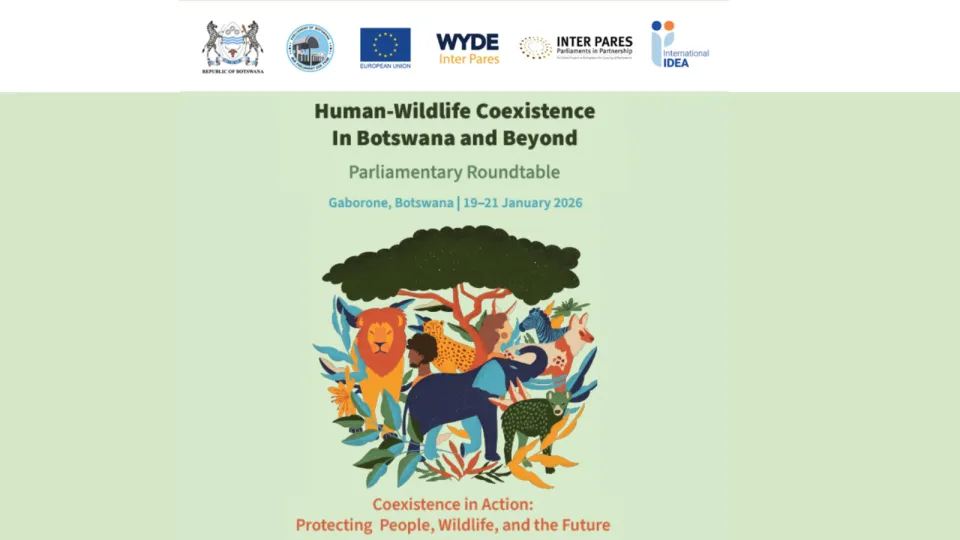Brussels, 19 February 2014 -- A new report, jointly published today by the League of Young Voters and International IDEA, reveals the reasons behind the very high rates of young people not voting in European elections and lays bare the mutual distrust between political parties and young people.
In the most recent European elections in 2009, youth absenteeism was very high – almost 65 per cent, with wide variations between member states (only 18 per cent of young people in the UK voted, whilst 59 per cent in Sweden did). Today’s report finds that absenteeism among young people is closely linked to socio-economic factors. A typical non-voter is a woman under the age of 25 who sees herself as belonging to the lower tiers of society, has not been to university and is either unemployed or has a manual job.
The study also reveals the attitude of the European political parties towards young people: they do not target young people in their campaigns (most likely because young people do not vote). In an evaluation of the main parties’ manifestos in five countries for the 2009 elections, the report finds that half the parties failed to mention young people and, where they did, they were merely paying lip service and failed to put forward specific policies relating to youth issues.
Today’s report also examines the reasons behind youth absenteeism at EU elections and dismisses some often-quoted explanations. For example, that not voting is a kind of protest against the EU. The data does not support this: young people are the least likely to abstain through dissatisfaction with the EU. Another possible explanation is that EU elections are seen as less important than national ones and that is why young people might stay away from the ballot box. However, the data reveals that those that abstain from EU elections almost certainly abstain from national ones too.
More likely explanations for youth absenteeism are found to be that young people feel excluded from politics and that the issues that they care about are not tackled by the main parties. This is consistent with the lack of attention to youth issues in parties’ manifestos. When young people realise this, apathy develops. Young people are very much engaged but their way of expressing this engagement (e.g. cause-related political activism) are not recognised by parties or government.
Giuseppe Porcaro, secretary general of the European Youth Forum, which established the League of Young Voters, comments:
“Today’s report should make for worrying reading for the main political parties. Young people are voting in increasingly low levels and this absenteeism creates a vicious circle where parties neglect youth issues and young people react by voting in ever smaller numbers. The good news is that precisely because young people are still very engaged in political issues – just through different means – they can be brought back to the ballot box.”
Andrew Bradley, director, Office of International IDEA to the EU, adds:
“The young generation of today is the first generation of “true global citizens” – the world needs young people to step up, show leadership, take responsibility and become involved in inclusive, democratic governance. Young people should use the power of the ballot box to exercise their right, responsibility and obligation to society by voting. To this end, European political parties can lead the way in supporting inclusive and sustainable democracy by promoting active youth participation and meaningful representation.”
The report makes a series of key recommendations, including that: member states should establish a quota on MEP candidates: 25 per cent should be aged under 35; youth issues should be clearly included in party manifestos; parties should target key groups such as the socially excluded, students and first time voters; social media should be used more to engage with young voters; the process of voting should be simplified; and the voting age for European elections should be lowered. Other key findings from the report include:
- On absenteeism and professional categories: students and unskilled manual workers are least likely to vote (only 27.6 per cent and 29.6 per cent respectively voted in the last EU elections); whereas those employed in general management, middle management, and professions such as being a doctor and farmers/fishermen are most likely to vote – over 50 per cent of these categories voted.
- On differences in abstention rates between young people and the general population, wide variations between member states were found: in the Netherlands there was a 25 per cent difference and this compared to only a two per cent difference in Portugal.
- Abstention rates are much more closely linked to dissatisfaction in the EU in older age groups than in younger ones (of 15-24 year olds only 14 per cent abstained because of dissatisfaction with the EU, this rose to 35 per cent amongst 55-64 year old category).



